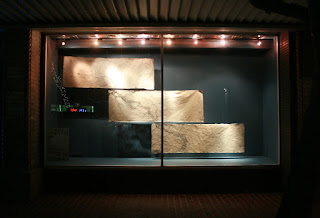Some photos from the opening for Napa's "Art on First" event this week. For the event, artists take over the empty storefronts in downtown Napa, and the installations will be up for the next year, barring any spaces getting rented.
These are shots of my installation, Clarity. The panels are made from Schoenoplectus californicus, better known as tule or California bulrush, harvested from the shores of Winery Lake.
(Click on images for enlargements).
To me, this is an example of how handmade paper art can transcend being just a an art object made in a craft tradition, to becoming site-specific and a form of Land Art. Clarity is made out of the land itself, and is being shown only a few miles from where the plants that it originated from grew.
As I said in my statement, I called the piece Clarity in reference to the "transparency and purity of the Napa River, but also [to suggest] the insight gained when we understand its value." Today, as I look at these photos, I can't help thinking about my conversation earlier this week with Jill about water usage in handmade paper, and how water will play out politics and survival in the future.
I love the Napa Art community, such wonderful, inspiring and amazing folks. Some very sweet friends from Napa told me that this piece was "poetry on paper, in this little context it is a huge continent."
Special thanks goes to the Arts Council of Napa Valley, particularly Christy Bors for all her organizing, and Cohan Sculley, for coordinating installation, general helpfulness, and above all, patience with me as installing dragged on and I kept saying I was almost done....thank you.




























